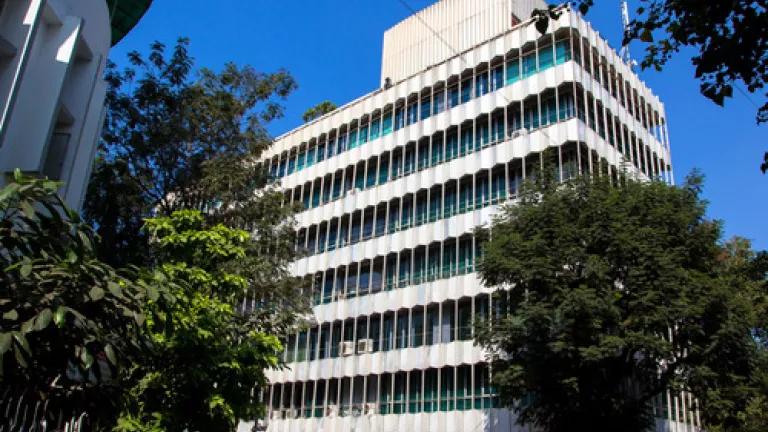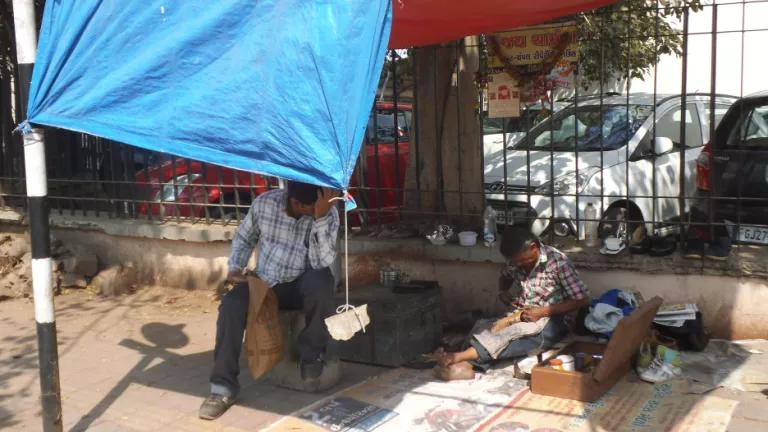Show Me the Money: Making the Business Case for Energy Efficiency in India's Skyrocketing Building Market

Today, we unequivocally answered the question that developers ask the most: can you prove that energy efficiency actually saves money in the context of Indian buildings? Our cutting-edge analysis of the energy efficiency upgrade of the iconic Godrej Bhavan office building in South Mumbai answers this question with a resounding yes. In only two years, energy efficiency measures have already saved the building’s owners significant energy and costs. The case study confirms that energy efficiency is good for business in India, and aims to energize the private sector to construct more efficient buildings from the start in India’s rapidly growing cities.
The Godrej Bhavan efficiency upgrade shows us that practical, cost-effective energy savings can be implemented in India now. In 2010, after years of paying high electricity bills, Godrej & Boyce decided to upgrade lighting, heating, air conditioning, and building management systems to make them more efficient. Only two years later, the company’s electricity use has already dropped by more than 12 percent. With those energy savings come lower electricity bills: Godrej & Boyce has already saved 28.6 percent on their electricity costs during those two years.
Thanks to these savings, the company is set to recover the costs of the energy efficiency retrofit in as little as 5 years. And the benefits don’t stop there. Godrej Bhavan now provides a healthier work environment for its workers, from the more efficient windows and lighting systems to the cooling systems. These upgrades and benefits are replicable throughout India, as my colleague Dr. Radhika Khosla discusses in her blog.
Energy efficiency is also a key solution to solving India’s energy crisis and global climate change. In India, the growing demand for energy—which became all too clear during the historic blackouts in July 2012—is matched only by the country’s soaring economic growth. Despite the threat of climate change, the pace of construction is trying to keep up with the demand for expansion and new infrastructure. With two-thirds of the commercial and high-rise buildings projected to exist in India by 2030 yet to be built, conventional and renewable energy resources alone are not enough to keep up with this pace. Energy efficiency is needed to reduce the gap between energy demand and supply, and lessen the strain on the existing infrastructure.
To build momentum to move the Indian buildings market toward energy efficiency, India needs a two-pronged strategy: (1) setting efficiency standards for the bottom of the market, while (2) supporting and guiding developers at the top of the market. States across India are already taking significant steps to accelerate energy efficiency, including Andhra Pradesh’s recently announced adoption of the Energy Conservation Building Code (ECBC) for new commercial construction. Our building efficiency report Constructing Change identifies more of the barriers and action steps for the leading groups in the Indian efficiency market.
But much remains to be done to energize the private sector as well. Many of the discussions over the past two days at the Clean Energy Ministerial in Delhi highlighted the essential role of the private sector in leveraging its expertise, influence, and capital toward clean energy goals. Specifically, innovative strategies are needed to encourage real estate developers to adopt energy efficiency measures. As the drivers of construction demand, developers need to lead the top of the buildings market towards efficiency.
Our Godrej Bhavan case study confirms that efficiency measures pay for themselves in a relatively short time, reduce energy use and bills, and ultimately save companies even more money. The case study is the first in a series to provide a compelling real-world example of the electricity and cost savings that efficiency retrofits can provide in the Indian market, all with a short payback period.
As the participants of the Clean Energy Ministerial made clear, linkages between the public and private sector are vital to transition countries like India to a clean energy economy. As local and state governments continue to push the bottom of the market up with minimum efficiency codes and other policies, the private sector can help lead the top of the market to build smart. This Godrej Bhavan case study gives developers the real energy and cost savings information they need to become energy-efficiency leaders in rapidly urbanizing regions of India. The country’s looming energy crisis depends on these developers and building owners investing in energy efficiency to usher in a more sustainable energy future.
Co-authored by Meredith Connolly, NRDC Energy Law & Policy Fellow



